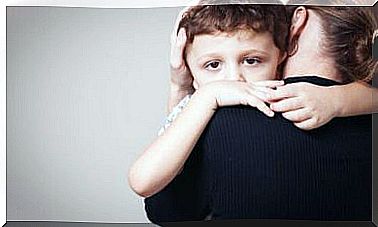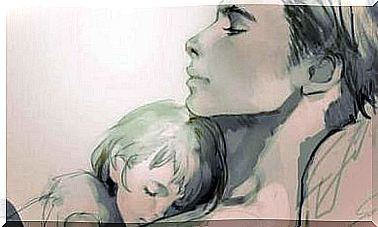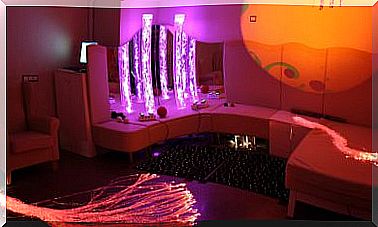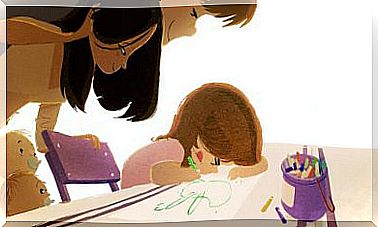The Problem Of “non-supportitis ” According To Albert Ellis

Albert Ellis has been one of the most influential psychologists in the development of theories applied to the practice of clinical psychology and psychotherapy. He is known for developing and putting into practice the model of therapy known as rational emotional behavioral therapy, which has followers and adherents both in Europe and the United States.
Rational Emotional Behavioral Therapy or TREC is based on the fact that humans interpret all the information that comes to us, both from our external environment (social context, situations, events) and from our internal environment (feelings, emotions, sensations). All of these are stimuli that function as activating events (or antecedents) of beliefs, and to explain why some people experience certain events as a catastrophe and others do not, Albert Ellis elaborates the following model:
A (internal or external events) ⇒ B (“beliefs” or beliefs; they act as an interpretive filter) ⇒ C (emotional consequences of interpretations).

The irrational beliefs that Albert Ellis identified in the patients who came to his consultation
Throughout his years of work as a psychologist and researcher, Ellis comes to the conclusion that we all share a series of very strict and limiting beliefs that would be responsible for emotional and psychological distress. The beliefs that Ellis identifies as the most common are the following:
- “It is an extreme necessity for the adult human being to be loved and approved by practically every significant person in society.”
- “To consider yourself valuable you must be very competent, sufficient and capable of achieving anything in every possible way.”
- “Certain class of people are vile, evil and infamous and they must be seriously blamed and punished for their wickedness.”
- “It is tremendous and catastrophic that things are not going the way you would like them to.”
- “Human misfortune originates from external causes and people have little or no ability to control their pain and disturbances.”
- “If something is or can be dangerous or fearsome, you should feel terribly uneasy about it and constantly think about the possibility of this happening.”
- “It is easier to avoid than to face certain responsibilities and difficulties in life.”
- “You have to depend on others and you need someone stronger to trust.”
- “Your past history is a decisive determinant of your current behavior, and that something that once happened to you and shocked you must continue to affect you indefinitely.”
- “One should feel very concerned about the problems and disturbances of others. “
- “Invariably there is a precise, correct and perfect solution to human problems, and that if this perfect solution is not found, catastrophe will ensue.”
We will not go into detail in each of these ideas, but it is important to bear in mind that having one or more of these beliefs in a deep-rooted way, originates one of the main problems that people who come to psychological consultation refer: the “not supportantitis” . In other words, when one of these beliefs is not fulfilled or is not “satisfied”, people with low tolerance for frustration and great attachment to their beliefs cannot bear what they experience, and all of this generates significant psychological discomfort.
What is can’t standitis?
When a person interprets his reality through irrational beliefs, he ends up becoming a person who does not feel happy, since, without realizing it, he filters everything that lives using these maladaptive beliefs. That is, they are beliefs that make those who have them classify everything that happens to them based on whether it frustrates them or not. And this is complicated, because the basic beliefs are wrong.
Thus, the problem of non-supportitis is born, which is based on magnifying the feeling of frustration that one has when one of these beliefs is not fulfilled or verified by reality. People with can’t stand it magnify any type of daily setback or inconvenience they may have. They are also very demanding people with themselves and their environment, they want everything to be as they believe it should be and, as they are very rigid approaches, they experience unpleasant emotions very often.

In other words, when irrational beliefs are activated and used to interpret experience, understand the past, and anticipate the future, non-supportitis originates. Also, as a result of the use of irrational beliefs, there are people who develop tremendousness (everything is experienced as terrible, dramatic) and “condemnation” (they condemn others or themselves with negative adjectives). The difference between these problems caused by irrational beliefs is the main sensation that the subject experiences.
How do you know if you have can’t standitis?
People with can’t standitis have a very low tolerance for frustration, they find it difficult to adapt to changes and they are not flexible on a psychological level (you want everything in a certain way and they do not accept that something is different from what they expect). For Ellis, any emotional disturbance is related to one of the 11 irrational beliefs. And that is why the goal of therapy will be to detect and change both the erroneous inferences and the dogmatic and absolutist beliefs that originate them.
To get rid of the non-support, Albert Ellis creates a series of specific psychological techniques that can be grouped according to what they seek to change. For this reason, cognitive, emotional and behavioral techniques are used in rational emotional behavioral therapy; We will see them below.
ERT techniques to get rid of unsupporteditis
Cognitive techniques
- Discussion or debate of irrational ideas (the main one).
- Written assignments to detect and change thoughts.
-
Reference (advantages and disadvantages of maintaining a habit).
-
Problem solving: seeing life in terms of problem solving, maintaining an attitude of seeking what is preferred, not what is required or demanded of us.
- Semantic precision : using an appropriate language, the correct words because it is language that determines thought.
- Teach Rational Emotive Behavioral Therapy to other people.
Emotional techniques
- Exposure to undesirable emotions.
- Emotional expression techniques.
- Unconditional acceptance at a cognitive, verbal, emotional and behavioral level to facilitate unconditional self-acceptance by the patient himself.
- Use stories, jokes, legends, parables, and songs.
- Exercises to overcome embarrassment.
- Exercises of self-disclosure of something intimate, secret or shameful.

Behavioral techniques
- Self-imposed rewards and punishments supervised by the therapist and / or a family member.
- Live exhibition, flood type rather than gradual.
- Skills training.
- Stimulus control.
Finally, it is important to keep in mind that non-supportitis has a solution. If you feel identified or identified, you can turn to a psychologist who works with the rational emotional-behavioral therapy model. The first step is to find out what belief is behind each moment of can’t stand it. This way, you can begin to discuss those ideas with yourself, put them to the test, and seek to change them.









